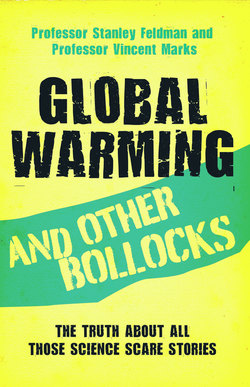Читать книгу Global Warming and Other Bollocks - Stanley Feldman - Страница 27
На сайте Литреса книга снята с продажи.
Medieval warming
ОглавлениеIt is generally accepted that the Earth warmed up significantly more during medieval times than during the 20th century and that it cooled down considerably during the Little Ice Age of the 16th and 17th centuries, without any anthropogenic event that would have affected the CO2. Between 1940 and 1975, there was a significant fall in recorded temperatures at a time of intense industrial activity associated with the war and post-war reconstruction. In the last decade, the Meteorological Office Hadley Centre has confirmed that satellite records show that Earth has cooled by about 0.4ºC, although the CO2 level has increased by 0.004 per cent.
Although not absolute disproof, these well-documented events throw grave doubt on the validity of the hypothesis. Until there is proven confirmation of the relationship between CO2 and the Earth’s temperature, it remains an unproven theory.
If future technical developments show there to be a fault in the analysis of the ice-core samples that have been so readily accepted as proof of the role of CO2 in global warming, then the whole scheme will be thrown into disrepute. So far, alternative methods of analysis of the age of the gases contained in the trapped bubble have supported the initial findings. The results appear to be reproducible. The problem with the ice-core investigations is that in some instances the rise in temperature found in these samples appears to precede the increase in CO2. Many of the ice-core samples from around the Vostok Lake in eastern Antarctica showed that warming actually preceded the rise in CO2, sometimes by 600 years. This effect had been noted in other ice-core samples but it is concealed by the compression of the timescale (x axis) in most presentations. Although various explanations of these findings, based on water–CO2 feedback mechanisms (the Claussius–Clapeyron equation), have been offered by the CO2 theorists, they are mathematically improbable and scientifically implausible. It remains absolutely impossible to explain how an increase in CO2 could be the cause of a rise in temperature that occurred hundreds of years earlier. This finding, if proven beyond reasonable doubt in a single site, would constitute positive disproof of the theory that the increase in temperature is the result of the rise in CO2. The rise in CO2 found after a rise in temperature can be readily explained, as any increase in the temperature of the oceans would be expected to drive off dissolved CO2. However, as they are a huge depository for energy this process occurs only slowly.
